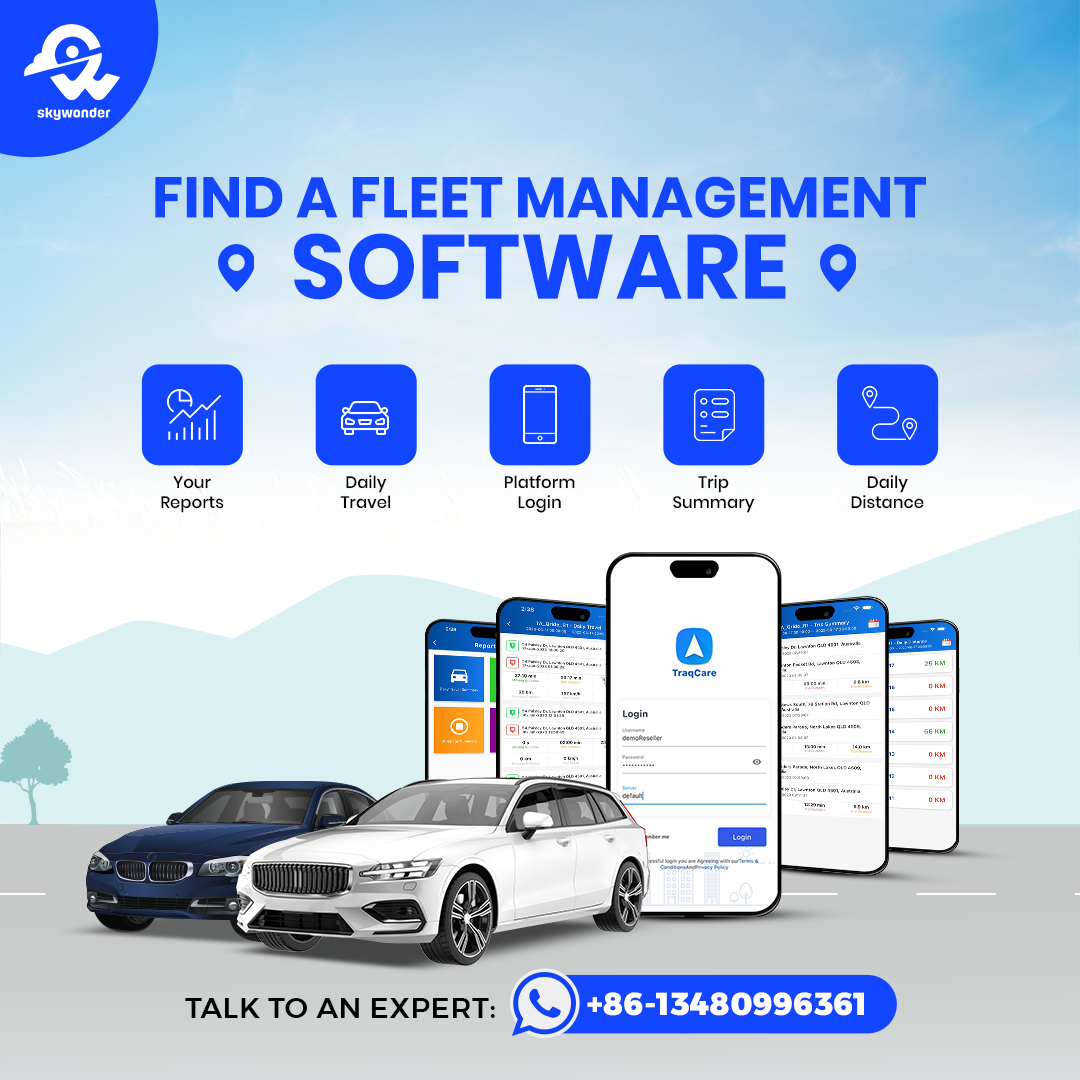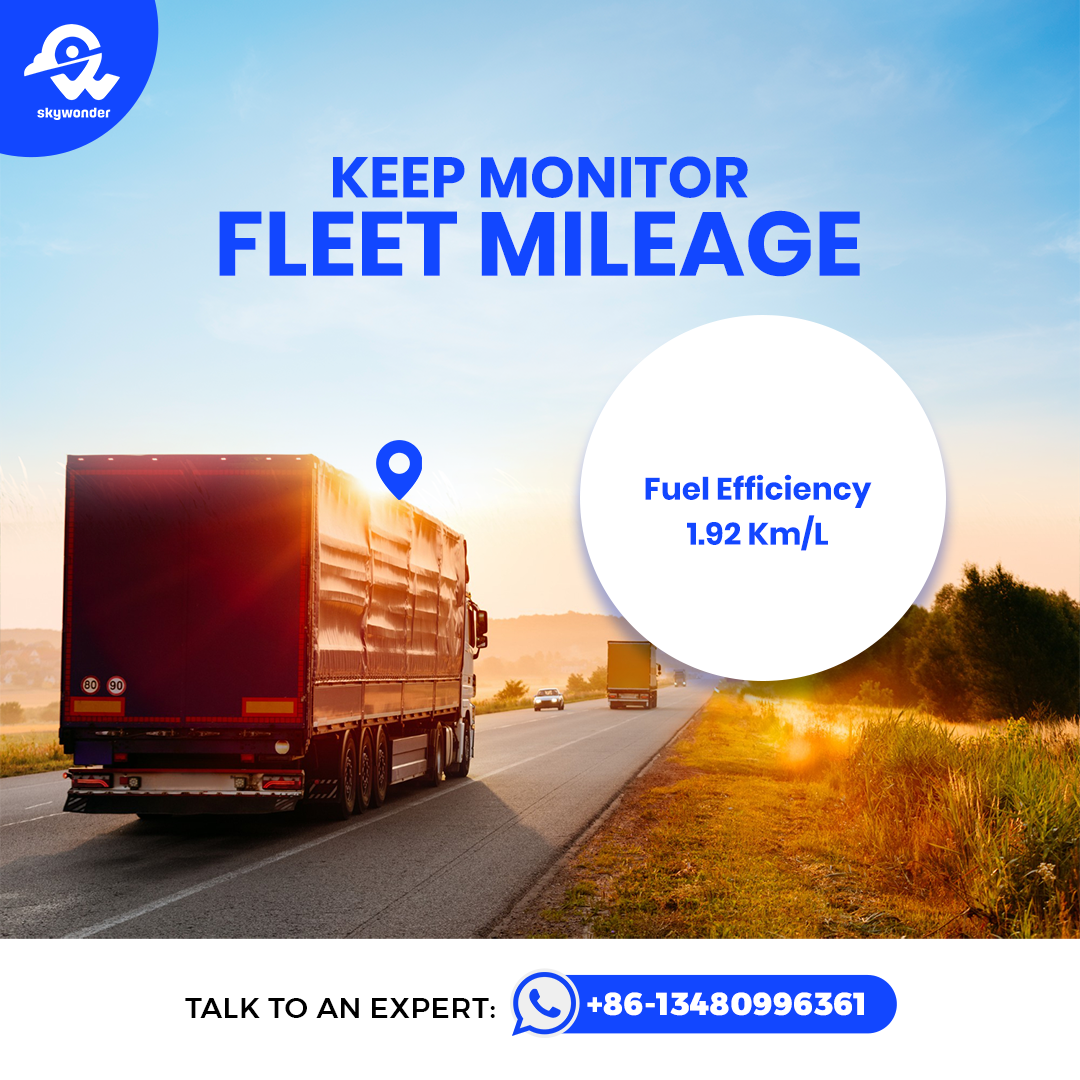10 Ways To Reduce Fleet Costs
Learn about 10 ways to reduce fleet costs and how it relates to GPS tracking and fleet management.
Skywonder Team

10 Ways to Reduce Fleet Costs
Fleet management is tough. As someone who has been in the GPS tracker industry for over 12 years with Skywonder Technology Company Limited, I know the pressure fleet managers are under to reduce fleet costs without compromising on efficiency. Here are 10 practical ways to cut costs without sacrificing quality or safety.
1. Optimize the Fuel Uses

Driver Training: Train drivers on efficient driving techniques like smooth acceleration and reduce idling time. Small changes in driving behavior can make big savings.
Telematics Systems: Use telematics to monitor driving habits and fuel consumption. Analyze the data to spot areas for improvement.
Vehicle Maintenance: Regular maintenance ensures vehicles run smoothly. Timely oil changes, tire pressure checks and air filter replacements are key.
2. Find a Fleet Management Software

Fleet management software can simplify operations and reduce fleet management costs. Skywonder’s Traqcare has it all:
Real-time Tracking: Track vehicle locations, driver performance and fuel consumption in real-time.
Automated Scheduling: Automate maintenance schedules, route planning and reporting to save time and money.
Data Analytics: Use data analytics to spot cost saving opportunities like route optimization and reducing idle times.
3. Keep Monitor Fleet Mileage

Monitoring mileage is key to fleet cost reduction and vehicle wear and tear:
Route Optimization: Use GPS and routing software to find the best routes, eliminate unnecessary miles.
Virtual Meetings: Encourage virtual meetings when possible to reduce travel.
Mileage Policy: Have a policy for long distance trips approval.
Ready to start saving?
Implement these fleet cost reduction strategies today and see immediate results.
Ask For Samples4. Make Changes to Fuel Policy
A fuel policy can help manage and cut fuel expenses:
Fuel Cards: Issue fuel cards to monitor and control fuel purchases.
Bulk Fuel Purchasing: Negotiate bulk fuel purchases to get better rates.
Driver Education: Educate drivers on fuel efficiency and how to achieve it.
5. Take Action To Reduce Accidents

Driver Training Programs: Conduct regular training sessions on safe driving.
Telematics Monitoring: Use telematics to monitor driving behaviour and address bad habits quickly.
Safety Incentives: Have incentive programs for safe driving.
6. Vehicle Maintenance

Predictive Maintenance: Use fleet management software to predict and schedule maintenance before problems occur.
Cost Effective Services: Compare service providers and choose cost effective, high quality independent garages.
Regular Inspections: Do regular inspections to catch small issues before they become big problems.
7. Bulk Purchase and Leasing
Buying or leasing in bulk can save you a lot:
Negotiate: Negotiate bulk purchase deals with GPS manufacturers for discounts.
Long-term Leasing: Consider long-term leasing to reduce upfront costs and get lower monthly rates.
Value-added Services: Negotiate with suppliers for extra benefits like extended warranties or free maintenance packages.
8. Understand Total Cost of Ownership
Knowing the total cost of ownership (TCO) helps you make informed buying decisions:
Full Analysis: Calculate all costs, purchase price, fuel, maintenance, depreciation, insurance.
Data-driven: Use fleet management software to analyse and compare TCO for different vehicle models.
Lifecycle Management: Implement lifecycle management to replace vehicles at the right time, balance cost and performance.
Take control of your fleet expenses!
Discover how you can reduce fleet costs and maximize efficiency with our expert tips.
Ask For Samples9. Reduce Service Fees
Service fees can add up fast but can be managed:
Competitive Bidding: Regularly bid for maintenance and repair services.
Service Contracts: Negotiate service contracts with discounts or extra services.
Cost Monitoring: Use fleet management software to track and analyse service costs.
10. Use Tax Incentives
Tax incentives can save you a lot:
Stay Informed: Keep up to date with government policies and tax incentives for fleets.
Eco-friendly Vehicles: Buy eco-friendly vehicles to qualify for green tax incentives.
Tax Consulting: Work with tax experts to make sure you get all the eligible savings.
Case Study: Cost-saving in Action
One of our clients, a logistics company in Kuwait, applied these strategies and saved 20% of their fleet costs over 2 years. They used Skywonder’s Traqcare software to optimise fuel usage, streamline maintenance schedules and train drivers in fuel efficient driving. They also used our GT10 4G Multi-purpose GPS Tracker for fuel monitoring, driver Identification and real-time vehicle tracking. This whole approach reduced fuel and maintenance costs and also lowered accident rates, resulting in overall cost savings.
So there you have it, these are the practical fleet management ideas to save costs and still be efficient and safe. By doing so you’ll have a more sustainable and cost efficient fleet and a better bottom line.
Common Questions From Fleet Managers:
Question: How do I save fuel?
Saving fuel is a big part of fleet management cost savings. Here’s how:
Train drivers on fuel efficient driving techniques like steady speed, no harsh braking and acceleration and reduce idling time.
Keep vehicles well maintained with regular oil changes, tyre pressure checks and air filter replacements.
Use telematics to monitor and analyse fuel consumption data and see where you can improve.
Plan and optimise routes to cut out unnecessary mileage and avoid traffic.
Question: What are the best fleet management software options?
Choosing the right fleet management software can make a big difference to your efficiency and cost savings. Here are some of the top options, including our own:
Traqcare by Skywonder: Our full software has real-time tracking, automated scheduling and data analysis to optimise fleet operations.
Samsara: User friendly and feature rich, Samsara has real-time GPS tracking, driver safety tools and detailed analytics.
Geotab: Customisation options and powerful data analysis to manage fleets of all sizes.
Verizon Connect: A full solution with GPS tracking, maintenance scheduling and driver behaviour monitoring.
Cut down on fleet costs and boost your bottom line!
Follow our top 10 tips and transform your fleet management. Start optimizing today!
Ask For Samples
Question: What are the common challenges in fleet management?
Fleet management comes with many challenges that can impact efficiency and costs:
Rising Fuel Costs: Fuel prices can fluctuate so it’s hard to predict and manage fuel spend.
Vehicle Maintenance: Keeping up with maintenance schedules is time consuming but essential to avoid costly repairs.
Driver Behaviour: Managing and improving driver behaviour is critical for safety and efficiency but hard to monitor and enforce.
Regulatory Compliance: Staying compliant with various regulations requires constant attention and is a big administrative burden.
Data Management: Managing large amounts of data from telematics and fleet software can be overwhelming without the right tools and processes.
Addressing these challenges with effective strategies and the right tools can lead to significant improvements in fleet management efficiency and cost savings.
Written by Skywonder Team
The Skywonder GPS team consists of experts in GPS tracking technology, fleet management, and IoT solutions.
Related Articles
View all
White Label GPS Tracker Solutions - Build Your Tracking Brand
Complete white-label GPS tracker solutions. Hardware with your branding, platform under your domain, mobile apps with your logo. Start from 100 units. Build your tracking brand today.
Enhance Your Brand with White Label GPS Software

SkywonderGPS IoT at Appliance and Electronics Show 2025 Dubai
Explore SkywonderGPS innovations at the Appliance & Electronics Show 2025 Dubai. Discover smart IoT tech in real-time GPS tracking.
Stay Updated with GPS Tracking Insights
Get the latest articles, tips, and industry news delivered to your inbox.
